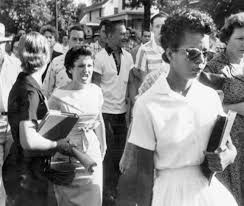The Nation’s Most Segregated Schools Aren’t Where You’d Think They’d Be
Share
Explore Our Galleries
Breaking News!
Today's news and culture by Black and other reporters in the Black and mainstream media.
Ways to Support ABHM?
By Stephen A. Crockett Jr. , theRoot
A recent study has found that a complex racial history and a lack of programs encouraging diversity have helped New York schools claim the title as the most segregated in the nation.

New York state’s public school system is the most segregated in the country because most of the state’s schools have virtually no white students. The majority of the state’s school population is African American and Latino, adding to the growing concern that connects educational problems with lack of diversity. The schools are often poverty-concentrated and include a less-experienced and less-qualified teacher workforce, according to a report released from UCLA’s Civil Rights Project.
The report from UCLA’s Civil Rights Project studied enrollment trends from 1989 to 2010 and found that almost 30 percent of the state’s schools had fewer than 10 percent white students. And in 11 percent of the schools, fewer than 1 in 100 students are white.
According to the study, these numbers are driven by several factors, including New York City’s complex racial history of segregation and the influx of charter schools, which some call “apartheid schools.” According to the study, more than half of the city’s 32 community school districts are “intensely segregated,” and a majority of charter schools boost shockingly low numbers, as fewer than 1 percent of the student’s population is white.
Read more about this study’s methods and conclusions here.
Here are 7 facts about modern segregation.
For more breaking news, click here.









Comments Are Welcome
Note: We moderate submissions in order to create a space for meaningful dialogue, a space where museum visitors – adults and youth –– can exchange informed, thoughtful, and relevant comments that add value to our exhibits.
Racial slurs, personal attacks, obscenity, profanity, and SHOUTING do not meet the above standard. Such comments are posted in the exhibit Hateful Speech. Commercial promotions, impersonations, and incoherent comments likewise fail to meet our goals, so will not be posted. Submissions longer than 120 words will be shortened.
See our full Comments Policy here.